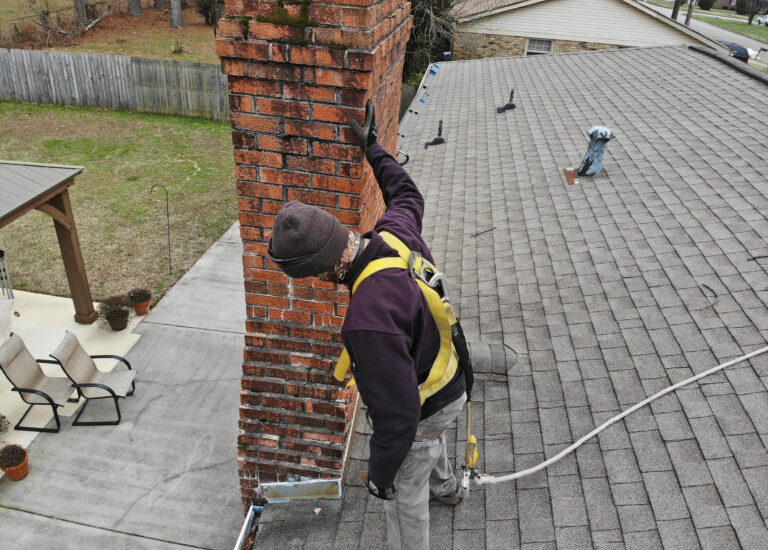Rhode Island’s weather patterns can present challenges for homeowners, especially when it comes to chimney maintenance. Below are some common chimney issues and how to address them.
1. Chimney Cap Problems
Chimney caps are the first line of defense against damage to your chimney. Common issues with a chimney cap RI include:
· Corrosion: Rhode Island’s coastal location exposes chimney caps to salt air, which can lead to corrosion over time.
· Debris Accumulation: Leaves, twigs, and other debris can accumulate on the chimney cap, potentially blocking the chimney flue and leading to ventilation problems.
· Animal Entry: A chimney cap in RI will prevent birds, squirrels, raccoons, and other animals from entering your chimney and nesting there. However, damaged or improperly fitted caps can allow pests to gain access.
How to Address Chimney Cap Problems:
· Regular Inspection: Perform regular inspections of your chimney cap to check for signs of corrosion, damage, or debris accumulation. If you notice any issues, address them promptly.
· Cleaning: Remove debris from your chimney cap to ensure proper ventilation and prevent blockages. This can often be done with a chimney brush or by carefully using a hose.
· Repair or Replacement: If your chimney cap shows signs of corrosion or damage, you may need a repair or replacement. Consult a professional specializing in chimney cap repair in Providence RI.
2. Creosote Buildup
Creosote is a natural byproduct of burning wood in your fireplace or wood-burning stove. Over time, creosote can accumulate on the interior walls of your chimney, posing several problems:
· Fire Hazard: Creosote is highly flammable and can ignite, leading to chimney fires that can damage the chimney’s structure.
· Blockage: Excessive creosote buildup can block the chimney flue, affecting proper ventilation and causing smoke to back up into your home.
How to Address Creosote Buildup:
· Regular Cleaning: Schedule annual chimney cleanings by a certified chimney sweep. They will inspect and remove creosote buildup, reducing the risk of chimney fires.
· Use Seasoned Wood: Burn only seasoned hardwood, as it produces less creosote compared to unseasoned or softwood.
· Proper Airflow: Ensure that your fireplace or wood-burning stove has proper airflow to help minimize creosote buildup.
3. Water Damage
Rhode Island’s climate, characterized by coastal proximity, can subject chimneys to moisture exposure, leading to water damage:
· Masonry Deterioration: Water penetration can cause the masonry in your chimney to deteriorate over time, leading to cracks and structural issues.
· Efflorescence: Water can leach minerals from the bricks, causing efflorescence (white, powdery deposits) on the chimney’s surface.
How to Address Water Damage:
· Chimney Crown Repair: Ensure that your chimney crown is in good condition, as it acts as a protective barrier against water. Repair or replace it if necessary.
· Waterproofing: Apply a waterproofing sealant to your chimney to protect it from moisture damage. This should be done by a professional chimney technician.
· Flashing Inspection: Regularly inspect and maintain the flashing around your chimney to prevent water from seeping into your home.
4. Cracks in the Masonry
Freezing and thawing cycles in Rhode Island can cause the masonry in your chimney to crack over time. These cracks can compromise the structural integrity of the chimney and lead to water penetration and further damage.
How to Address Cracks in the Masonry:
· Tuckpointing: Tuckpointing involves removing deteriorated mortar and replacing it with fresh mortar, restoring the chimney’s integrity.
· Brick Replacement: If the cracks have caused bricks to become loose or damaged, consider replacing them to prevent further deterioration.
· Sealing: Seal any small cracks in the masonry with an appropriate chimney sealant to prevent water infiltration.
5. Drafting Issues
Proper ventilation is essential. Common causes of drafting problems are an obstructed chimney cap, creosote buildup, or structural issues.
How to Address Drafting Issues:
· Chimney Cap Inspection: Ensure your chimney cap is in good condition and free from debris and consider a chimney cap repair Providence RI if needed.
· Creosote Removal: Regularly clean your chimney to reduce creosote buildup, which can obstruct proper ventilation.
· Consult a Professional: If you continue to experience drafting issues, consult a chimney professional.
6. Structural Damage
The structural components of your chimney, such as the flue liner, bricks, and mortar, can start to deteriorate due to exposure to the elements and the effects of combustion.
How to Address Structural Damage:
· Flue Liner Inspection: Ensure that the flue liner is in good condition. If it’s damaged, it may need to be repaired or replaced.
· Masonry Repairs: Address any cracks, loose bricks, or mortar deterioration promptly to prevent further structural damage.
· Chimney Rebuild: In severe cases of structural damage, a chimney may need to be partially or fully rebuilt. Consult a professional for an assessment and recommendations.
Conclusion
By addressing common chimney issues in Rhode Island, you can ensure that your chimney is safe and effective. Regular inspections and maintenance, coupled with professional assistance when needed, will help keep your chimney in excellent condition for years to come.

